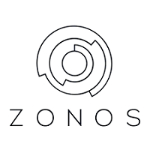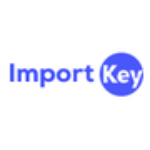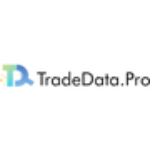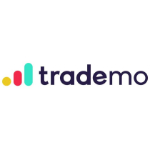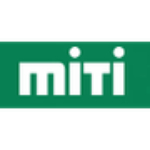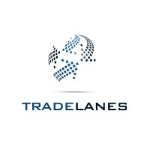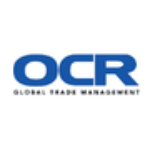TechnologyCounter provides genuine, unbiased real user reviews to help buyers make informed decisions. We may earn a referral fee when you purchase through our links, at no extra cost to you.
List of 15 Best Global Trade Management Software
Showing 1 - 15 of 17 productsZonos is a software solution that streamlines international ecommerce for businesses of all sizes. With Zonos, managing duties, taxes, and compliance regulations has never been easier. From seamless integration with popular platforms to efficient ord...Read Zonos Reviews
PartnerLinQ is a perfect software solution for businesses looking to streamline and enhance their partner management process. Say goodbye to the complexities of managing partnerships and welcome a user-friendly platform that simplifies communication...Read PartnerLinQ Reviews
ImportKey is a tool that allows businesses to seamlessly manage and import data from various sources. This innovative software streamlines the process of data importing, making it efficient and hassle-free. With ImportKey, businesses can easily stay...Read ImportKey Reviews
Trade Data Pro is a solution for businesses to navigate the complex world of international trade. With its advanced features interface, it streamlines the process of analyzing trade data, providing valuable insights and maximizing profits. Revolution...Read Trade Data Pro Reviews
Trademo Intel is a software for traders looking for a competitive edge in the market. Powered by advanced analytics and real-time data, Trademo Intel provides traders with valuable insights and strategies to make informed decisions and stay ahead of...Read Trademo Intel Reviews
Market Inside is an innovative software that provides users with valuable insights and data about market trends and updates. With its user-friendly interface, it allows businesses to stay ahead in the competitive market and make informed decisions. S...Read Market Inside Reviews
ImportGenius is a tool for businesses looking to gain a competitive edge in the global market. With in-depth data and detailed insights, ImportGenius allows you to track shipments and monitor your competition with ease. Stay ahead of the game and mak...Read ImportGenius Reviews
Cargoes is an innovative software designed to simplify and streamline the complex process of managing cargo transportation. With its user-friendly interface and powerful features, Cargoes helps businesses of all sizes to efficiently handle their ship...Read Cargoes Reviews
Mitigram is revolutionizing the world of global trade with its innovative software. By streamlining complex processes and connecting businesses with trusted partners, Mitigram is changing the game for companies of all sizes. With user-friendly featur...Read Mitigram Reviews
Acuitive is more than just a software company. We are innovators, creators, and problem solvers. Our team is dedicated to creating intuitive and user-friendly tools that help businesses of all sizes thrive in a constantly evolving digital landscape...Read Acuitive Reviews
MIC-GTM is a solution for businesses looking to streamline their international trade operations. With its advanced features and user-friendly interface, MIC-GTM simplifies complex processes and provides efficient management of global trade activities...Read MIC-GTM Reviews
TradeLanes is a software that streamlines global trade operations for businesses of all sizes. With its user-friendly interface features, TradeLanes simplifies the complexities of international commerce, allowing companies to efficiently manage logis...Read TradeLanes Reviews
TradeWindow is a software that is revolutionizing the way businesses trade. With its user-friendly interface features, TradeWindow streamlines the trading process and empowers businesses to connect and transact with ease. Say goodbye to complicated p...Read TradeWindow Reviews
OCR Global Trade is a solution for efficient and streamlined international trade management. With advanced technology and user-friendly features, OCR Global Trade simplifies the complexities of global trade, allowing businesses to expand their reach...Read OCR Global Trade Reviews
ImpexDocs, a revolutionary software designed to streamline your import and export processes. With its user-friendly interface features, ImpexDocs simplifies document management, simplifies regulatory compliance, and speeds up the entire trade process...Read ImpexDocs Reviews
- What Is Global Trade Management Software?
- Top Reasons Why Businesses Need Global Trade Management Software?
- What Are the Top Key Features of Global Trade Management Software?
- What Are the Top Benefits of Global Trade Management Software?
- What Are the Steps to Choose the Right Global Trade Management Software?
- What Are the Types of Global Trade Management Software for Different Industries?
- What Are the Technology Trends for Best Global Trade Management Software?
- What Are the Deployment Options for Global Trade Management Software?
What Is Global Trade Management Software?
Global Trade Management Software (GTMS) is a component of enterprise software designed to facilitate the comprehensive management of import and export processes within businesses.
The system provides support for several facets of commerce, encompassing functions such as shipment tracking, tax and regulatory management, and currency exchange rate monitoring. The primary objective of global trade software is to optimize and enhance the operational efficiency of businesses in managing cross-border transactions.
In general, the software comprises a range of tools that facilitate the automation of several stages within the trading process, as well as the necessary paperwork and adherence to regulatory requirements. This facilitates the transportation of goods and services on a global scale.
The visibility functions of global commerce management software are notably advantageous. This implies that enterprises has the capability to monitor the progress of shipments, both incoming and outgoing, in a live and continuous manner.
This facilitates the acquisition of real-time information regarding the status and advancement of shipments, hence resulting in enhanced efficiency and cost-effectiveness for companies. trade management tool enables organizations to automate compliance operations, encompassing the verification of essential documentation and adherence to pertinent safety, tax, and export criteria for shipments.
This measure is to mitigate the risk of companies incurring substantial financial penalties or experiencing significant delays. Moreover, this particular program also aids organizations in maintaining awareness of fluctuations in the global market, including aspects such as currency exchange rates and taxation obligations.
Hence, enterprises can effectively ascertain that they consistently adhere to the appropriate financial allocations and regulatory frameworks.
Top Reasons Why Businesses Need Global Trade Management Software?
1. One way to enhance global trade processes is by ensuring adherence to relevant legal regulations.
2. The objective is to implement automated document processing techniques in order to enhance the efficiency and precision of managing orders and shipments.
3. Reduce risks connected with currency volatility, economic instability or other influences.
4. Automate currency conversion for international orders.
5. One of the key benefits is the ability to obtain up-to-date information on all orders throughout the entire supply chain.
6. One can enhance their management of landing charges and duty expenses associated with foreign shipments.
7. Enhance the level of coordination with international counterparts, shipping companies, freight forwarders, and transportation providers.
8. Enhance the efficiency of compliance, customs, and duty management across diverse international jurisdictions.
9. One strategy to consider is the prioritization of services and the negotiation of more favorable agreements with logistics services providers.
10. Analyze purchasing trends to reduce costs and increase profits.
11. It is essential to closely observe and track the key performance indicators associated with global trade management.
12. The utilization of data to facilitate the process of decision-making.
13. The objective is to enhance the velocity and effectiveness of international trade operations.
14. The objective is to implement automated procedures for facilitating the shipment of international orders.
15. Enhance the quality of customer service and optimize customer satisfaction.
What Are the Top Key Features of Global Trade Management Software?
1. Automation of trade processes: The top global Trade Management software is designed to streamline and automate the various stages of the trade process, encompassing sales order management, shipping, and invoicing. By doing so, it contributes to the enhancement of operational efficiency in the realm of global trade.
2. Accurate Customs clearance: GTM software facilitates the streamlining of the Customs clearance procedure through precise computation of relevant duties, taxes, and fees, alongside enabling expedited and effective filing of documentation.
3. Easier Compliance with Regulations: The global trade software facilitates adherence to international trade regulations through its automated examination of trade policies, prohibitions, and laws.
4. Risk Mitigation: The GTM program facilitates the monitoring of prospective hazards that may have financial or legal consequences, as well as the tracking of modifications in trade agreements.
5. Enhanced visibility and analytics: The best global trade management software offers customers an improved level of visibility pertaining to foreign shipments, potential hazards, and trading expenses. Additionally, its analytics functionalities enable users to derive valuable insights, leading to the creation of operational efficiency and the identification of prospective opportunities.
6. Interoperability: GTM software provides a platform that enables integration with other systems and partners. This enables bi-directional communication across different systems, thus boosting the efficiency and accuracy of data sharing.
What Are the Top Benefits of Global Trade Management Software?
1. Automates the paperwork and compliance requirements: The top global trade management software streamlines the task of completing necessary documentation and ensuring adherence to regulatory requirements for international suppliers and collaborators.
The utilization of this method aids in minimizing the amount of time wasted on manual data input, while simultaneously guaranteeing precision in the capturing of essential information.
2. Improves productivity: This software plays a crucial role in optimizing trade operations and ensuring efficient and precise task execution. This phenomenon is associated with a rise in productivity.
3. Reduces paperwork: Global trade management software streamlines administrative tasks by automating paperwork needs, resulting in a reduction of time and effort allocated to manual data entry and related procedures. This facilitates the allocation of additional time for other critical responsibilities.
4. Increases visibility: The utilization of trade management tools offers consumers a user-friendly interface that facilitates the monitoring and tracking of their shipments throughout the entire process. This aids in enhancing the level of visibility pertaining to the procedure.
5. Reduces errors: Global trade management software effectively minimizes the occurrence of errors throughout the process by streamlining operations and maintaining precision. This practice aids in guaranteeing the excellence of outcomes.
6. Enhances communication: The top global trade management software plays a crucial role in enhancing communication between suppliers and partners, hence promoting improved coordination of essential tasks necessary for the achievement of effective trade operations.
What Are the Steps to Choose the Right Global Trade Management Software?
1. Identify your business requirements: The initial step in selecting an appropriate solution is to determine the specific requirements of your business in relation to best global trade management software. Evaluate the characteristics, incorporations, and functionalities required to fulfill your organizational requirements.
2. Research and compare vendors: Having acquired knowledge about the criteria to consider, commence the process of conducting market research to identify a product that aligns with your specific needs. Examine the diverse feature needs that have been determined and do a comparative analysis of the vendors included in your list.
3. Consider cost: The aim of this analysis is to approximate the expenses associated with implementation, training, and licensing, followed by a comparative assessment of the leading vendors in order to determine the most favorable price-performance ratio.
4. Think about flexibility: Assess the software's configurability and adaptability in relation to the evolving requirements of your organization.
5. Look for complete solutions: When selecting an appropriate top global trade management software, it is essential to ensure that it encompasses a comprehensive array of features, integrations, and capabilities that align with the specific business requirements.
6. Evaluate customer support: The success of software adoption hinges upon the presence of high-quality customer service and technical support. Evaluate the customer service policies of the vendors and ascertain whether one provides the optimal level of help at a competitive price.
7. Review user feedback: Examining the perspectives of others towards a specific software can provide valuable practical insights. To gain insights into the user experience of the program in issue, it is advisable to consult user comments available on online forums, review platforms, and social media platforms.
8. Test the software and seek feedback: The majority of vendors provide a trial or demonstration version of their software. Utilize this chance to acquire practical experience and actively seek user input.
9. Finalize your decision: After completing all the necessary procedures, one can proceed to select the trade management tool that aligns with their business requirements, adheres to their financial constraints, and provides the desired level of adaptability and customer assistance.
What Are the Types of Global Trade Management Software for Different Industries?
The classification of global trade management software for various businesses exhibits variation, typically encompassing four distinct areas.
1. Supply Chain and Logistics Management: This software is utilized by organizations operating within the global supply chain and logistics sector, including those engaged in international shipping, warehousing, and materials management.
The program facilitates the optimization and mechanization of the global supply chain, empowering organizations to enhance resource management, monitor shipments, and exercise inventory control more efficiently.
2. Financial Management: Financial management software is employed by organizations to enhance their ability to effectively handle and mitigate financial risks that arise from engaging in international trade activities.
This particular program facilitates the management of various financial transactions such as payments, invoices, foreign exchange, exchange rates, and other related functions. Financial management software provides assistance to organizations in managing their finances, as well as ensuring adherence to accounting principles and tax regulations.
3. Trade Compliance Management: The utilization of trade compliance management software is vital for organizations that are required to conform to international trade regulations. This particular software facilitates the monitoring and management of alterations in global import and export regulations for businesses.
Additionally, it aids organizations in managing administrative responsibilities related to researching trade terms and ensuring compliance with export control requirements.
4. Business Intelligence and Analytics: Companies utilize business intelligence and analytics software to effectively monitor the effectiveness of their global trade activities and discern opportunities for enhancement.
This software offers organizations valuable insights into customer patterns and market situations, facilitating the optimization of their worldwide trade operations. In general, the range of top global trade management software solutions is contingent upon the specific industry in which a company operates.
However, the fundamental advantages of such software remain consistent: facilitating the efficient and automated management of global trade operations, mitigating financial risks associated with international trade, and ensuring adherence to relevant trade regulations.
What Are the Technology Trends for Best Global Trade Management Software?
The technology trends for best global trade management software are as follows:
1. Automation: The significance of automation is growing in the global trade management (GTM) software sector. Automation enables organizations to expedite and enhance the processing and administration of international trade activities with greater speed and efficiency.
2. Data Analytics: The utilization of data analytics is progressively becoming indispensable within the GTM (Go-To-Market) software business.
Organizations are employing this technology to acquire a more comprehensive comprehension of their operations, so facilitating the optimization of their processes and the identification of potential avenues for expansion.
3. Cloud Implementations: The utilization of cloud implementations is increasingly prevalent in the GTM software market, facilitating enhanced operational management and data sharing across several countries for enterprises.
4. Artificial Intelligence (AI): The utilization of artificial intelligence (AI) is experiencing a notable rise within the GTM (Go-To-Market) software market, as organizations leverage its capabilities to enhance operational efficiency and optimize decision-making processes.
5. Internet of Things (IoT): The utilization of IoT technology facilitates the construction of a network of interconnected devices and systems, hence enabling enterprises to acquire instantaneous visibility into their worldwide trade processes.
What Are the Deployment Options for Global Trade Management Software?
Deployment options for global trade management software vary depending on the software provider, but typically there are three common methods for deployment, outlined below.
1. On-Premise: In this particular architecture, the top global trade management software is implemented and activated on the customer's local server, whereby the customer assumes the responsibility of overseeing the security, updates, and maintenance of the system.
2. Cloud-Based: The cloud-based deployment methodology offers a safe and remote environment for the implementation of global trade software. This paradigm obviates the necessity for consumers to oversee hardware and software changes, hence facilitating the expedited deployment of updates and remote access to the software.
3. SaaS (Software as a Service): The Software as a Service (SaaS) model enables clients to conveniently access software through a web-based portal, thereby offering a viable solution for customers who possess limited information technology (IT) resources.
This model offers a cost-effective solution for customers who opt against the acquisition and hosting of software on a local server.
